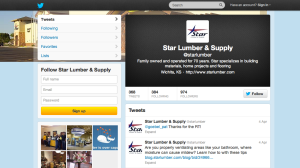Know the pro and separate yourself from the competition
As a manufacturer of building products you provide solutions for the home owner that get delivered, installed, and most importantly sold by someone you don’t know.
Oh sure, you ‘know’ who the builder or remodelers are. You read the trade publications, you go to conferences, you subscribe to newsletters, heck you even have an analyst in the marketing department. But do you really know what that person needs from your company?
While you have spent all that money on your brand, your website, your amazing new iPad app, does it mean anything to the person down the channel? This person may be sitting across the dining room table, on the job-site or in the model home making purchasing decisions with the homeowner. What does it mean to them?
Many times, the professional builder or remodeler has the ultimate power over the homeowner and what are they armed with? Their own marketing materials. Maybe they use your brochure, but in the end people buy from people they know, like and trust. No one trusts a brochure or an iPad app.
As budgets become available now that the recovery is here, be sure to include all the stops on your sales channel. Remember to equip everyone with what they need to help the next stop on the channel. What your one-step distributer/dealer needs is very different from a two-step wholesale selling to lumberyards selling to the pro.
Make the effort to understand that pro. Research them. Sit with them at the table with the homeowner. Put the time in to see how they use your cool new gadgets vs what they are comfortable using. You might be surprised at the wide range of options you need to provide.
You also have to think about how your brand message is delivered. It is the last stop in the funnel. Think about how you enable the sales process to occur as easily as possible. Are you making it easy for the pro to sell your products?
Some thoughts to ponder as you really look at the customer that sells your products for you. Always keep them in mind. While not directly your customer, they are often not given the full access to the manufacturer to help them. Those that have figured it out, and there are many, are separating themselves from the competition.











